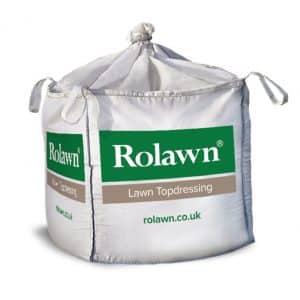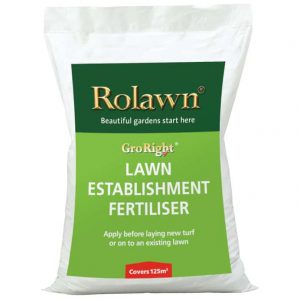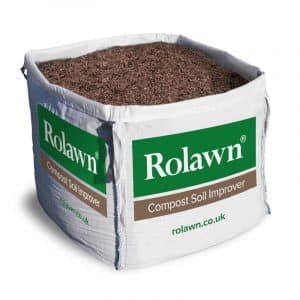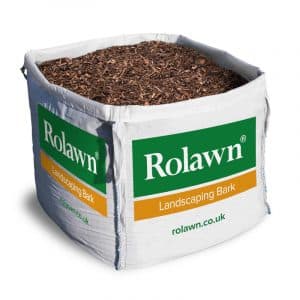Home / Information & advice / General Gardening Advice / Flood management in gardens
Changing UK weather patterns are leading to prolonged wet spells and saturated land. Thankfully, there are small but effective flood management measures we can take in our gardens and landscaping.
Here’s our guide to some of the simple steps you can take to protect your garden and your home, by preventing or alleviating flood-risk.
A well-maintained lawn absorbs water through the network of roots and air pockets beneath its surface. This makes it an excellent natural soak away and flood management technique. In the process of enjoying our lawns though, we can make them less permeable.
Where there is regular footfall, or use of gardening equipment like mowers, the particles of soil underneath the lawn compress. This process blocks the spaces through which the water would travel. It is known as compaction and can cause water to pool on the lawn.
If you have standing water on your lawn for a long period of time, it is advisable to ‘spike’ or ‘aerate’ your lawn immediately to help the water to drain away. In most cases, further remedial work should be done in early spring, as explained in our article ‘Repairing a flood damaged lawn.’
Allow your lawn to grow a little longer, especially during wetter periods. We generally recommend leaving lawns to grow a little longer through the winter. Longer grass absorbs more water and can look better during colder months.
Encourage ground vegetation on your beds and borders. This winter cover, sometimes called a cover crop, helps to reduce surface flooding. It does this by reducing or cushioning the impact of heavy rain and by encouraging percolation through the soil. What’s more, it will help to sustain a healthy soil ecosystem by providing food throughout the winter season. Many of these cover crops are simply incorporated into the soil in the spring to help boost its organic content.
Trees and shrubs slow the fall of rain as the water hits the leaves before reaching the ground. Once on the ground, a percentage is then absorbed by the roots. Stock your garden with leafy plants and water tolerant varieties, such as flag iris, arum lily and many ornamental grasses.

Gardeners use mulch for a variety of reasons, principally for aesthetics and to limit weed growth. Mulch helps to prevent moisture evaporation in warm, dry conditions. At the other end of the spectrum, mulch protects plant roots from frosts. However, we often overlook it as a method of easing the effects of heavy downpours.
When water lands on a mulched border, some is absorbed by the porous material and the rest percolates through. The effect being that water reaches the soil slower than if it had fallen directly onto the border. The mulch can also reduce the speed at which water flows across the surface. This will help retain precious topsoil and nutrients. In turn, this will reduce the negative impacts soil run-off can have on our rivers and streams.
Drainage issues occur in soils which have been depleted of organic matter. Clay-based soils or areas where it is excessively fine and silt-like are also prone to poor drainage. In these conditions, there are not enough pores (spaces) in the soil for water, and oxygen, to travel through the ground.
It’s easy to fix. Simply work in some coarse organic matter, such as well-rotted manure or garden compost, to create the air pockets needed for drainage. Mix in the organic matter to a depth of around 12 inches (approximately 30 cms). Read our articles on soil structure and improving soil for further advice.
Adding organic matter is also very good for soil biodiversity. From worms to microbes, a multitude of creatures work together to create healthy soil with a complex structure to help drainage and breathability.
The trend for hard landscaping, including patios and tarmac driveways has contributed to poor drainage around properties. This is particularly so in urban areas where flood management is critical. You can reverse this by replacing hard surfaces with porous materials, where possible.
Alternatively, install drainage solutions to the affected area. When planning landscaping, look at ways to encourage water to drain away from hard surfaces and buildings – factor in slopes towards drains, trenches and ponds.
A Sustainable Drainage System (SuDS) is a specially designed solution for managing storm water. SuDS work by catching the water as it runs off roofs, driveways and other hard surfaces.
Natural drainage systems, like ponds and rain gardens, are an excellent way of making the best use of water to create an attractive feature. You can stock these with leafy plants and water tolerant varieties, such as iris, arums, loosestrife and ornamental grasses, adding structure and colour throughout the year.
For a quick and simple rain garden take a look at the BioScapes® SuDS unit. This specialist wildlife planter captures rainfall from buildings, slows its passage and filters it before it enters sewers or rivers. In this way, it mirrors and assists the natural drainage process. This helps to reduce flooding and improves water quality. Its unique design also incorporates integrated wildlife habitats to support biodiversity.
If you follow on one, or all, of the above pieces of advice you will be playing a part in wider environmental conservation, as well as protecting your own space.
For more techniques to help you maintain your garden, explore our other advice guides.
You can also sign up for lawn tips to receive regular lawn care and gardening advice, news and promotional offers by email which will help you get the best from your garden.




You can also sign up to our newsletter to receive free seasonal lawn care advice and reminders of essential maintenance, as well as general horticultural advice and special offers from Rolawn.